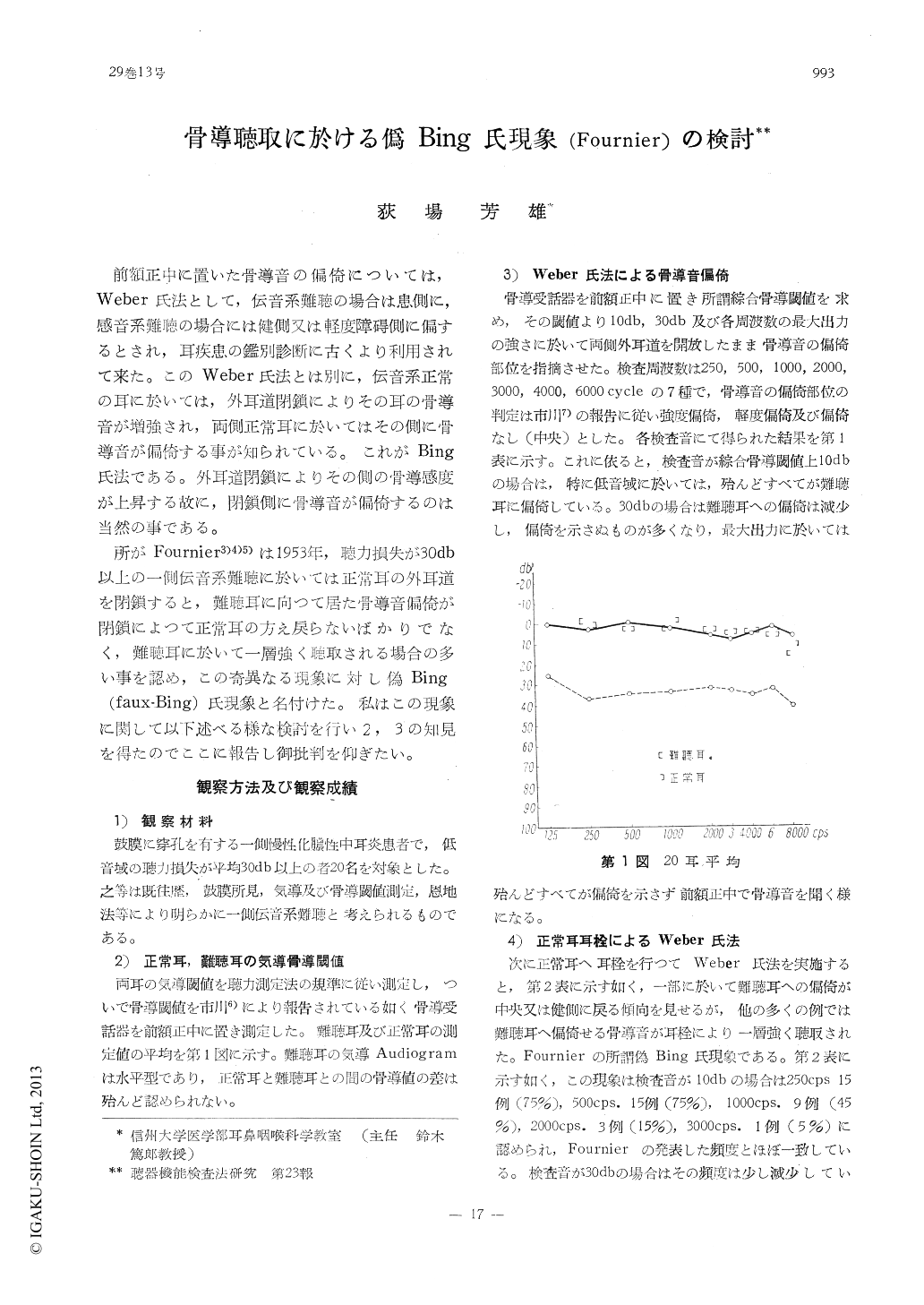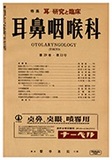- 有料閲覧
- 文献概要
- 1ページ目
前額正中に置いた骨導音の偏倚については,Weber氏法として,伝音系難聴の場合は患側に,感音系難聴の場合には健側又は軽度障碍側に偏するとされ,耳疾患の鑑別診断に古くより利用されて来た。このWeber氏法とは別に,伝音系正常の耳に於いては,外耳道閉鎖によりその耳の骨導音が増強され,両側正常耳に於いてはその側に骨導音が偏倚する事が知られている。これがBing氏法である。外耳道閉鎖によりその側の骨導感度が上昇する故に,閉鎖側に骨導音が偏倚するのは当然の事である。
所がFournier3)4)5)は1953年,聴力損失が30db以上の一側伝音系難聴に於いては正常耳の外耳道を閉鎖すると,難聴耳に向つて居た骨導音偏倚が閉鎖によつて正常耳の方え戻らないばかりでなく,難聴耳に於いて一層強く聴取される場合の多い事を認め,この奇異なる現象に対し偽Bing(faux-Bing)氏現象と名付けた。私はこの現象に関して以下述べる様な検討を行い2,3の知見を得たのでここに報告し御批判を仰ぎたい。
Ogiba in re-evaluating the phenomenon of false Bing test, in which the bone conduction sound is increased in the ear which is involved with impairment of hearing when the opposite ear with normal hearing is occluded by plugging of the external canal, advances a supposition that manifestation of this phenomenon might be due to the fact that increased bone conduction of the normal ear by plugging procedure may provide a sensation as if the involved ear is capable of hearing. Likewise in Weber test were bone coeduction is referred to the side of impairment in unilateral conductive hearing loss, the author is of oppinion that, this phenomenon also may be the result of projected hearing to the impaired side from the good ear.

Copyright © 1957, Igaku-Shoin Ltd. All rights reserved.


